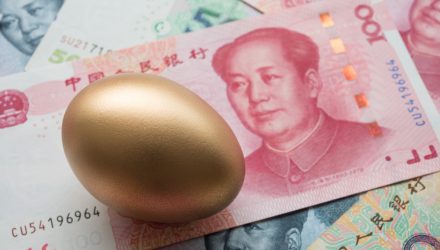One of the few bright spots for equity investors this year is aristocratic dividends investing, as both high dividend and payout growth strategies, broadly speaking, are outperforming the broader market.
Indeed, S&P 500 payouts are climbing to new highs, underscoring the importance of dividend growth and its benefits as an inflation-fighting tool. Obviously, that’s good news, but investors should not lose sight of the fact that payout growth isn’t solely a domestic phenomenon.
Ex-U.S. payouts are increasing, too, including myriad attractive opportunities in Asia. This could be a sign that the KraneShares S&P Pan Asia Dividend Aristrocrats ETF (KDIV) qualifies as a well-timed new exchange traded fund; KDIV debuted last month.
KDIV follows the S&P Pan Asia Dividend Aristocrats Index, which is the Asia equivalent of the famed domestic dividend aristocrats indexes that serve as the underlying benchmarks for several well-known ETFs. To qualify for entry into the index, companies must have a minimum dividend increase streak of seven years. There are requirements to enter this club.
“Companies must also have positive earnings and a dividend payout ratio between 0% and 100%. To avoid dividend traps, stocks with an indicated annualized dividend (IAD) yield above 10% are excluded from the index. The S&P Dividend Aristocrats methodology provides a ballast for investors since the ability to consistently grow dividends every year through different economic environments can be an indication of financial strength and discipline,” according to S&P Dow Jones Indices.
While China is the largest emerging markets dividend-payer both in terms of dollars and in terms of the number of dividend-paying companies, the S&P Pan Asia Dividend Aristocrats Index is reflective of other Asia-Pacific payout opportunities.
Those include Australia, which has long sported above-average yields, and Japan. For its part, Japan is fast becoming a shareholder rewards destination, as companies there are boosting both buybacks and dividends after decades of being notoriously tight-fisted with excess cash. In order, Japan, China, Australia, and Hong Kong combine for about 94% of the weight of KDIV’s index. Add to that, KDIV’s index has long sported a yield advantage over the S&P Pan Asia BMI.
“The S&P Pan Asia Dividend Aristocrats has shown considerable yield enhancement over the S&P Pan Asia BMI. Over the full period, the S&P Pan Asia Dividend Aristocrats averaged a 3.32% 12-month trailing dividend yield versus 2.42% for the S&P Pan Asia BMI,” added S&P Dow Jones. “Recently, the yield pick-up has been more pronounced. The difference in yield in 2020 and 2021 was 1.68% and 1.64%, respectively, compared with only 0.9% over the full period.”
For more news, information, and strategy, visit the China Insights Channel.
The opinions and forecasts expressed herein are solely those of Tom Lydon, and may not actually come to pass. Information on this site should not be used or construed as an offer to sell, a solicitation of an offer to buy, or a recommendation for any product.

